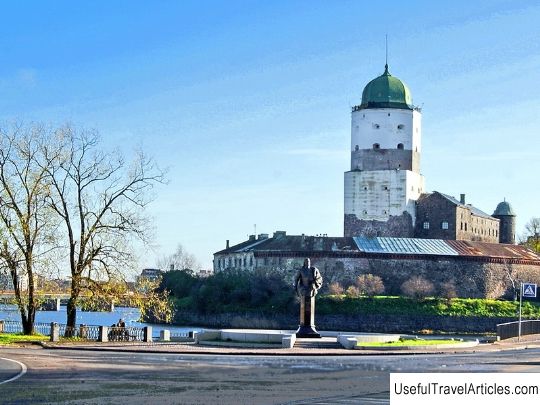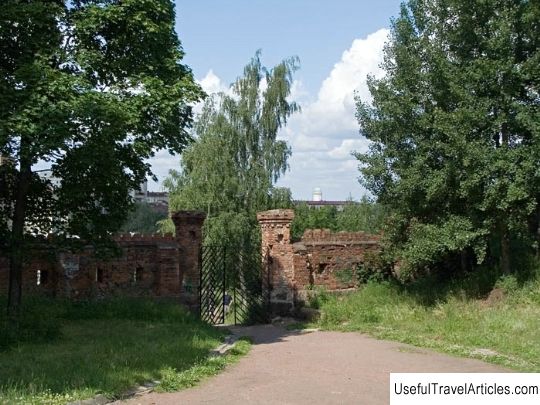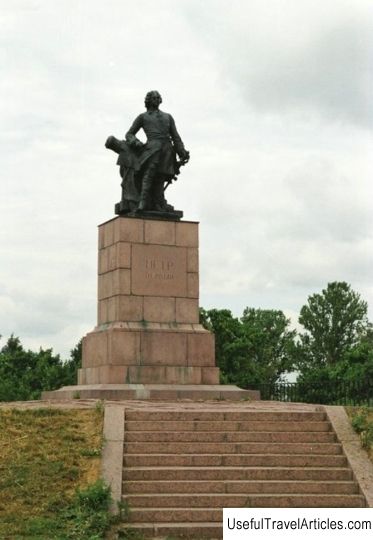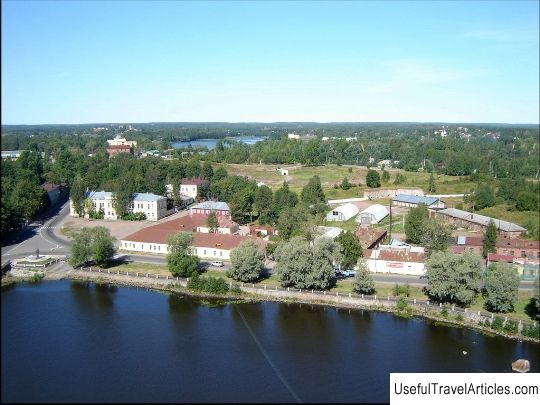Stele ”City of Military Glory” description and photo - Russia - Leningrad region: Vyborg
Rating: 7,6/10 (600 votes) 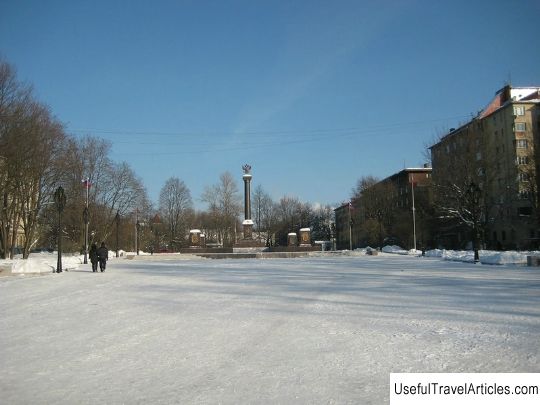
Stele "City of Military Glory" description and photo - Russia - Leningrad Region: Vyborg. Detailed information about the attraction. Description, photos and a map showing the nearest significant objects. Photo and descriptionThe "City of Military Glory" stele was opened in Vyborg in May 2011 in honor of the 66th anniversary of the Victory on the square of the Vyborg regiments. This monument is a tribute to the memory of those people who ensured the Victory and the life of today's generation. This sign is another reminder of the courage shown by the officers and soldiers of the heroic Red Army in defending their native land. The monument was made at the Vozrozhdenie mining enterprise from Vyborg red granite. Vyborg is the second city in the Leningrad Region to have such a memorial sign. The first stele was installed in 2010 in Luga. Three cities of the Leningrad Region were awarded the title "City of Military Glory": Tikhvin, Luga and Vyborg. The title "City of Military Glory" was awarded to Vyborg by the Decree of the President of the Russian Federation on March 25, 2010 The memorial sign "City of Military Glory" in Vyborg is a granite column made in the Doric order. It is crowned with a double-headed eagle made of gilded bronze. The total height of the column is 11 m. On the front side of the pedestal of the column, in a bronze cartouche, there is the text of the Presidential Decree on conferring an honorary title to the city. On the reverse side of the pedestal is the city's coat of arms, made of bronze. The column is installed on the site with dimensions in plan 17x17m. The corners of the composition are crowned with four pedestals with bas-reliefs, images on which describe heroic events and valiant deeds associated with the history of the city from the first days of its foundation to our time. Historians and ethnographers took an active part in the discussions about which events should be reflected in the monument. A lot of historical material was involved and considered. The Vyborg region occupies a special place in the military history of Russia. From the time of Peter I to the present day, the defenders of the Motherland have repeatedly shown their courage and courage on this land. During the Northern War with Sweden on March 22, 1710, Russian troops began the siege of Vyborg. On May 9 of the same year, a Russian fleet of 250-270 ships approached here. Peter I himself commanded one of the detachments. Vyborg stormed the Preobrazhensky and Semenovsky regiments according to the plan prepared by Peter. On June 14, 1710, the Preobrazhensky Life Guards regiment, together with Peter I, entered Vyborg. The Great Northern War ended with the signing of the Treaty of Nishtadt in 1721. Russia withdrew the entire Karelian Isthmus with Vyborg and Kexholm (now Priozersk). And in May 1790, during the Russian-Swedish war, the largest in the 18th century took place in the Vyborg Bay. naval battle, in which the Russian fleet under the command of Admiral V.Ya. Chichagov first blocked, and then defeated the enemy. In modern history, the Vyborg region and the Karelian Isthmus were also places of fierce military battles. During the war of 1939-1940. at the cost of huge losses, the Red Army coped with the task set by the country's leadership and military command, strengthening the country's borders in the north-west. Of particular importance are the historical facts of the Great Patriotic War, which are associated with the Vyborg offensive operation, which began on June 10, 1944. By the end of the first day of the offensive, our troops had already broken through the first line of German defense, liberating more than 80 settlements. And four days later, the Red Army stormed the second, most powerful defensive line. Our troops reached the third line of defense on June 18, were able to break through it and take possession of Primorsk. June 20, 1944 Vyborg was liberated. Seemingly impregnable 'Mannerheim Line' was broken through by the troops of the Leningrad Front. On July 6, the battles for the liberation of the islands in the Vyborg Bay ended. Soviet troops reached the pre-war border with Finland. For heroism and courage, 66 soldiers and officers were awarded the title of Hero of the Soviet Union, and 25 military formations and units that participated in the liberation of the Karelian Isthmus and Vyborg began to bear the honorary name of the Vyborgsky. All this served as the basis for the city to be awarded the honorary title “City of Military Glory.” The architectural complex of the stele was developed by a team of authors under the leadership of a full member of the International Academy of Architecture, Honored Architect of Russia, Voskresensky I.N. and Corresponding Member of the Russian Academy of Arts, Honored Artist of Russia, sculptor Shcherbakov S.A. The author of the draft design is the architect Gvozdev (OOO A1-Project (St. Petersburg)). The site improvement project for the complex was carried out by JSC Lengrazhdanproekt, Vyborg branch. The sculptural part of the monument was made by E.B. Volkov, was cast by her enterprise "Constant Plus" (St. Petersburg). The construction of the monument and the improvement of the territory was carried out by the organization "Proxima Plus" (Vyborg).     We also recommend reading Imatra Waterfall description and photos - Finland: Imatra Topic: Stele ”City of Military Glory” description and photo - Russia - Leningrad region: Vyborg. |
